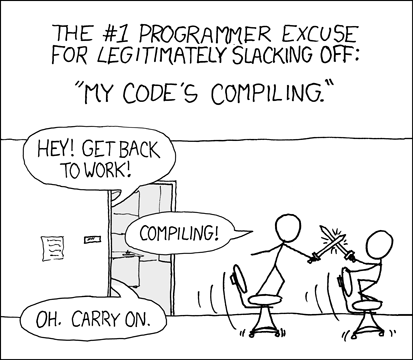Compile & Execute
The Process
C++ is a compiled language. That means that to get a program to run, you must first translate it from the human-readable form to something a machine can “understand.” That translation is done by a program called a compiler.
What you read and write is called source code (usually it’s in an English-like language like C++), and what the computer executes is called executable, object code, or machine code (a machine language).
Typically C++ source code files are given the suffix:
- .cpp (ex: hello.cpp) or
- .h (ex: std_lib_facilities.h).

Compile:
g++ hello.cpp -o hello
A compiler translates the C++ program into machine language code which it stores on the disk as a file with the extension .o (e.g. hello.o). A linker then links the object code with standard library routines that the program may use and creates an executable image which is also saved on disk, usually as a file with the file name without any extension (e.g. hello).
Execute:
./hello
The executable is loaded from the disk to memory and the computer’s CPU (Central Processing Unit) executes the program one instruction at a time.
Running Hello World Locally:
On the Mac, it’s called the Terminal. On Windows, it’s called the Command Prompt.

Video Tutorials:
- Running Hello World via Terminal (Mac)
- Running Hello World via Command Prompt (Windows)
Note: In the video above, some of the instructions for downloading and installing
g++are outdated.- At 2:54 in the video, navigate to https://www.msys2.org instead of mingw.org.
- Under the “Installation” heading, complete steps 1 through 4 to download and install MSYS2. We recommend that you choose the default folder for installation.
- Complete steps 5 through 7 to ensure all packages are up to date and to install
g++. Be sure to enter the commands exactly! - To use the tools that you have downloaded and installed, you will need to add them to the
PATHenvironment variable. Pick up in the video at 4:17 for instructions on how to do this, but note that the directory you add will be different! If you used the default installation location (C:\msys64), the directory you should add toPATHisC:\msys64\mingw64\bin. If you installed MSYS2 elsewhere, simply add\mingw64\binto your installation location.
- Using Microsoft Visual Studio Code
Compiling (xkcd)

